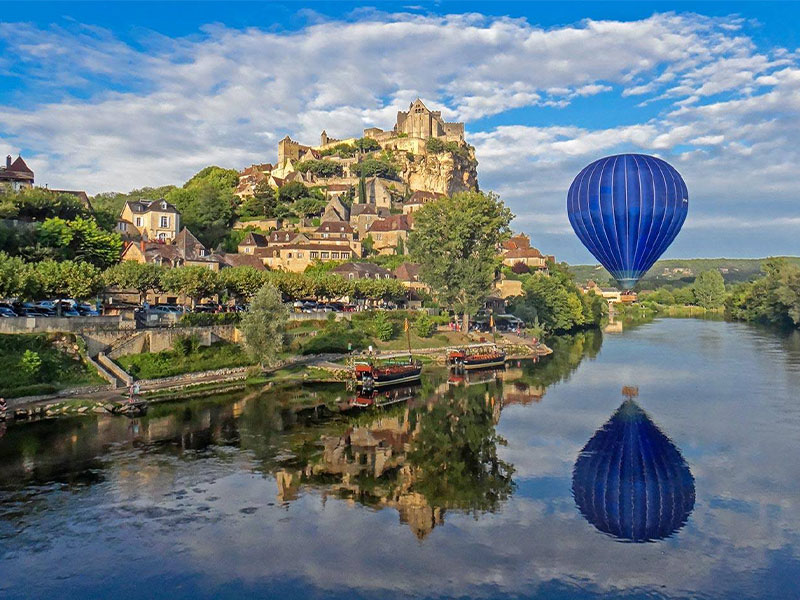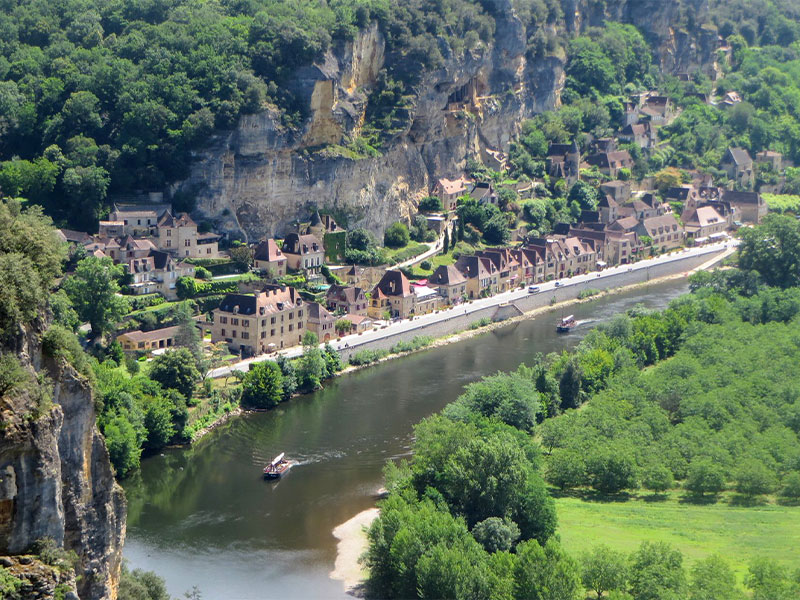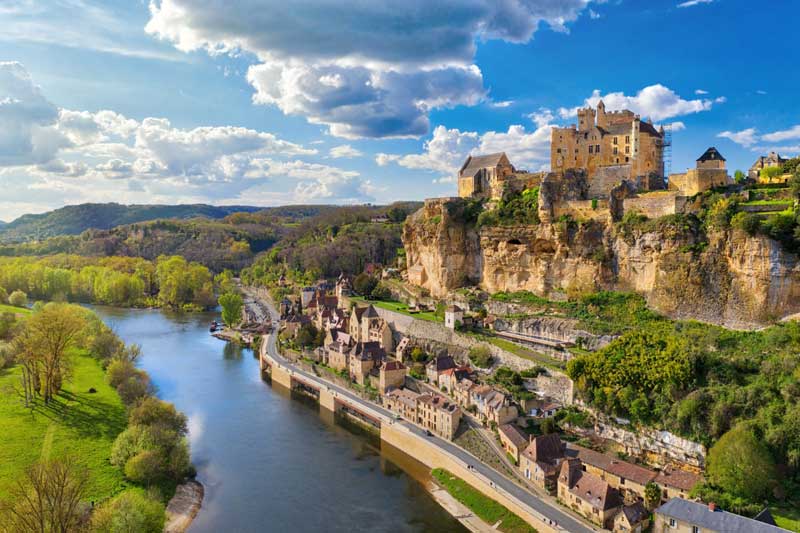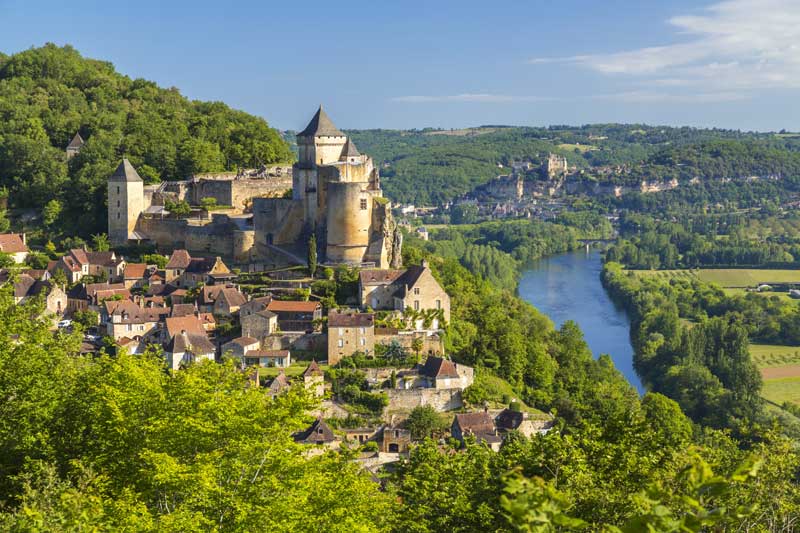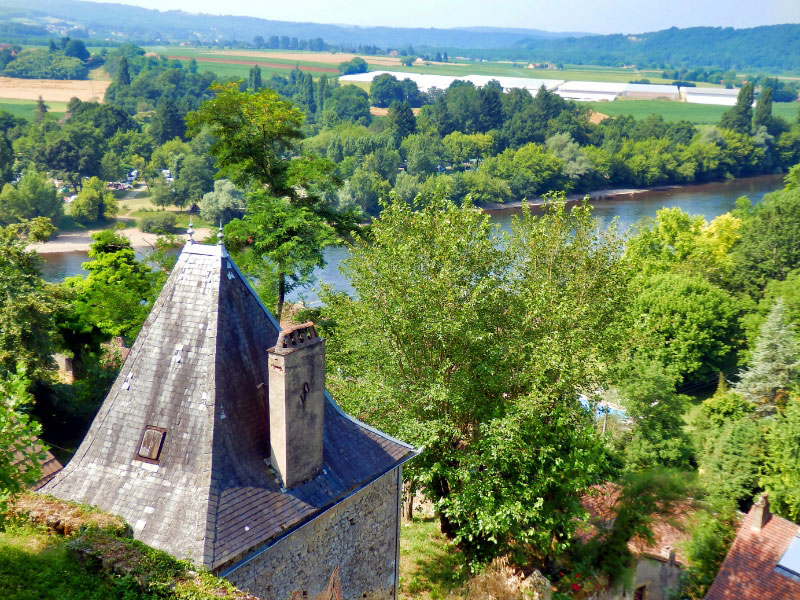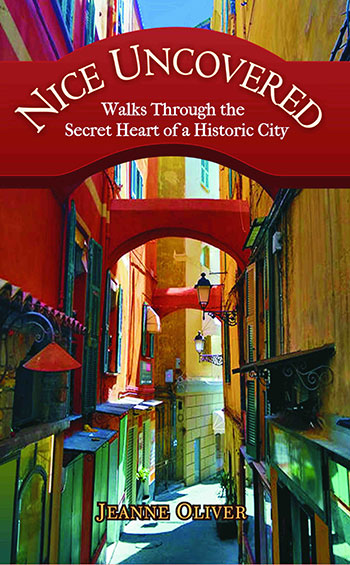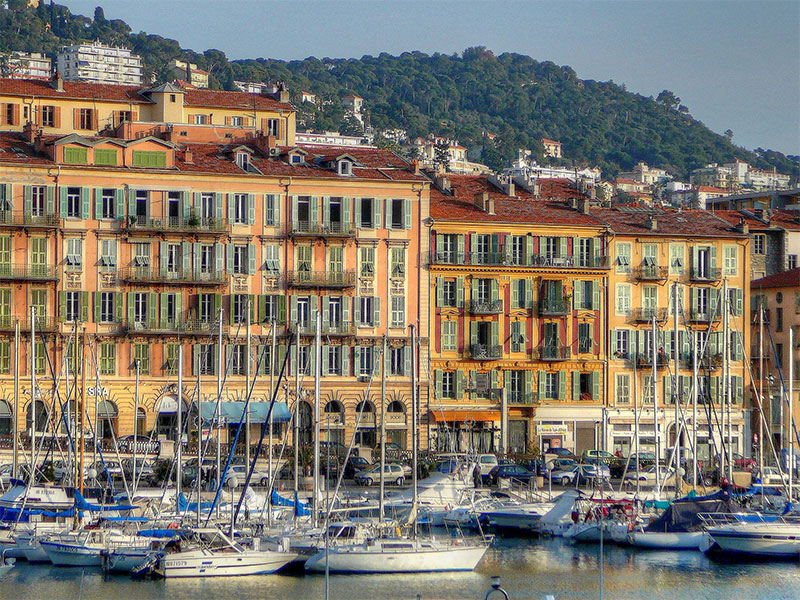Aim for the top and have a sense of humour when it comes to castles in Dordogne says Mike Zampa…
We moved into our part-time home last month in France’s Dordogne Valley. Our village is called La Roque Gageac. We’re halfway up a steep hill above the glistening Dordogne River AKA the suburbs of this 13th-century town of 400 people. Downtown is nestled at the foot of a sheer cliff hundreds of feet straight up.
People like to be on top of things in Southwest France – or more precisely, on top of the world. At our house in California, heaven is a flat lot for the swimming pool. Here, only water sans gazeuse is flat. Everything else is built on perches.
Historians say hilltop towns reflect the Dordogne’s brutish history. Marauders and invading armies convinced villagers to build above the fray. Far enough up and the pillagers would look for alternatives the rationale went.
Fortunately for us, the strategy worked… sort of. Villagers were still terrorized through the Middle Ages. But their towns survived. What’s left are hamlets listed among the most beautiful in France. Breath-taking in every sense of the word.
Here’s a list of top (pun intended) towns at altitude in the Dordogne, each more beautiful than the last. Their names are followed by their rating on our highly scientific high-o-meter.
La Roque Gageac (Nosebleed high)
The village of Roque Gageac dates to the 12th century when troglodytes lived in caves. It begins on the banks of the Dordogne then goes straight up. From the river, it’s a picture in a storybook. From the cavern-like fort etched out of a cliff face, it’s a nosebleed. Villagers retreated to the fort to escape Vikings with world domination issues. Today you can scale 174 stairs to the fort. The staircase clings to the cliff. You would too if you saw a Viking.
Beynac (uncomfortably high)
Beynac is overshadowed by its castle rising hundreds of feet above the Dordogne. It’s within eyesight of its adversary, Castelnaud, just minutes up the river. Both fortresses were focal points of the Hundred Years War. To understand which country – France or Britain – controlled which castle, read a book. It’s too hard to explain here. You can reach the castle by climbing a twisting, cobblestone path flanked by dreamy stone cottages. What they don’t tell you is that you don’t need to walk up the steep path. There’s a road going up to a parking lot near the castle entrance. And they said there were no jokes coming out of the Hundred Years War.
Castelnaud (Like Beynac only steeper)
This restored castle is illuminated at night. You can see it from all over the Dordogne Valley. You can see the moon, too, though it’s not quite as high. Quaint cottages tumble down -figuratively speaking – the hillside below Castelnaud. There’s an impressive trebuchet, a catapult-like weapon that flung 400-pound boulders 40 meters. Scared the heck out of the enemy but took 60 minutes to load. During the other 59 minutes, there was hell to pay.
Limeuil (Feral cats use handrails)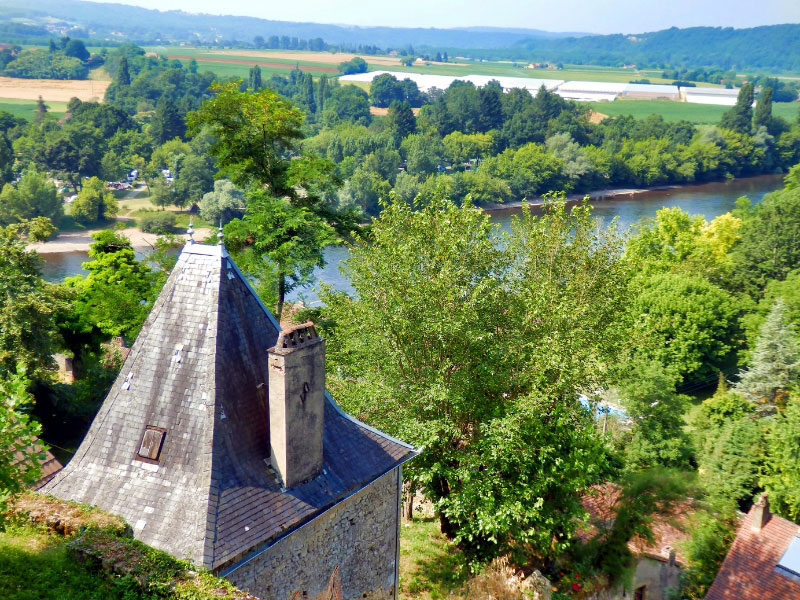
Two natural phenomena define this gorgeous hilltop village. The first: The Dordogne and Vézère rivers converge here under two lovely arched bridges. The second: no two Frenchmen pronounce Limeuil the same way. Take the sharp vertical drop from the hilltop lookout past picturesque shops. It will take your mind off the fact you’re basically descending the face of the Chrysler Building.
Domme (Don’t look down)
This is a classic Bastide town. That means it was built behind a wall on a hilltop to discourage invaders. What a waste of time. The first invaders took one look at Domme and said: “No way I’m climbing that.” In addition to altitude, Domme has one other claim: the most beautiful view in the world. You can see miles of geometrically cultivated farmland from its Belvedere. There’s also a magnificent river view of the Dordogne making a hard left turn to neighboring Vitrac.
In summary, Southwest France has peaks and a valley. It’s all beautiful, but the peaks will have you over the moon…quite literally.
